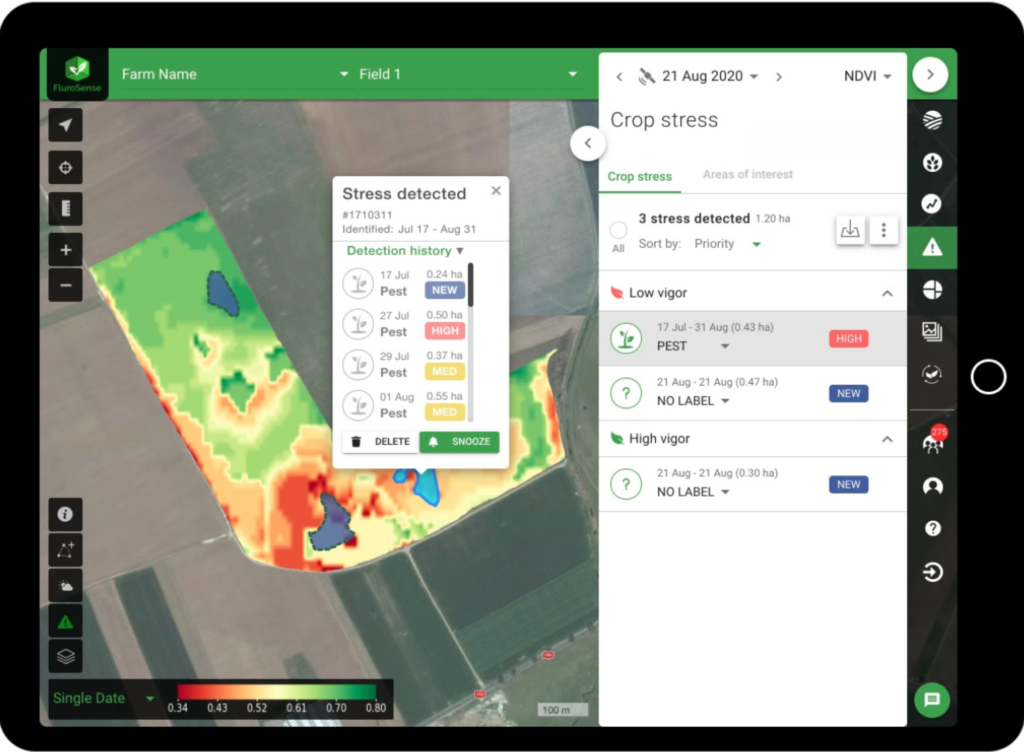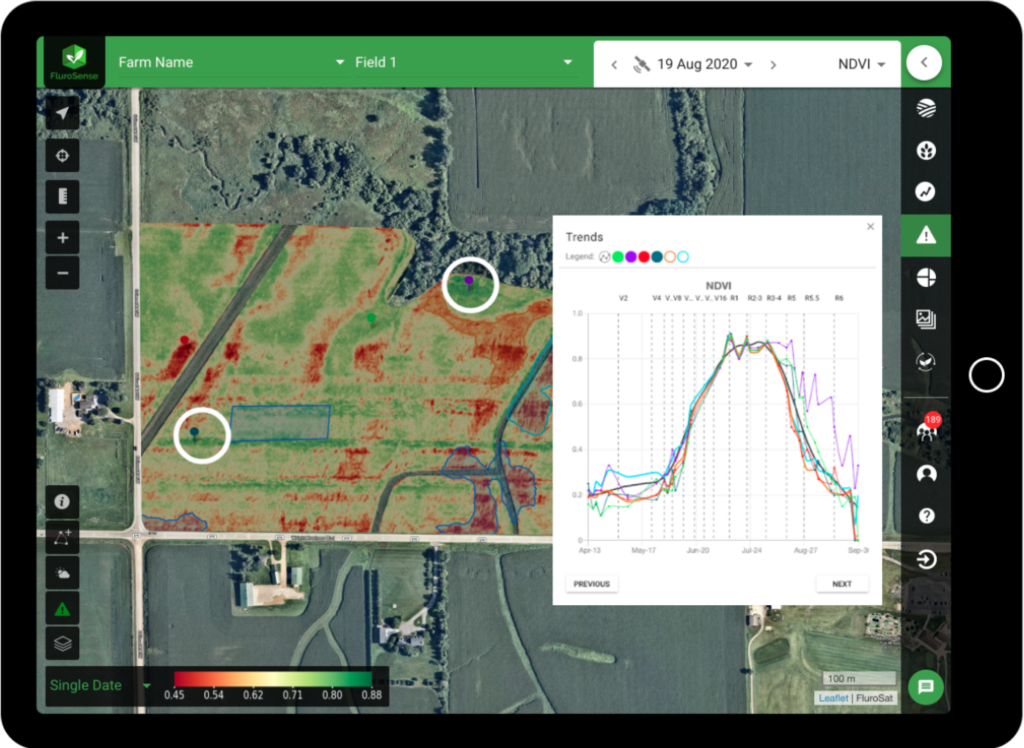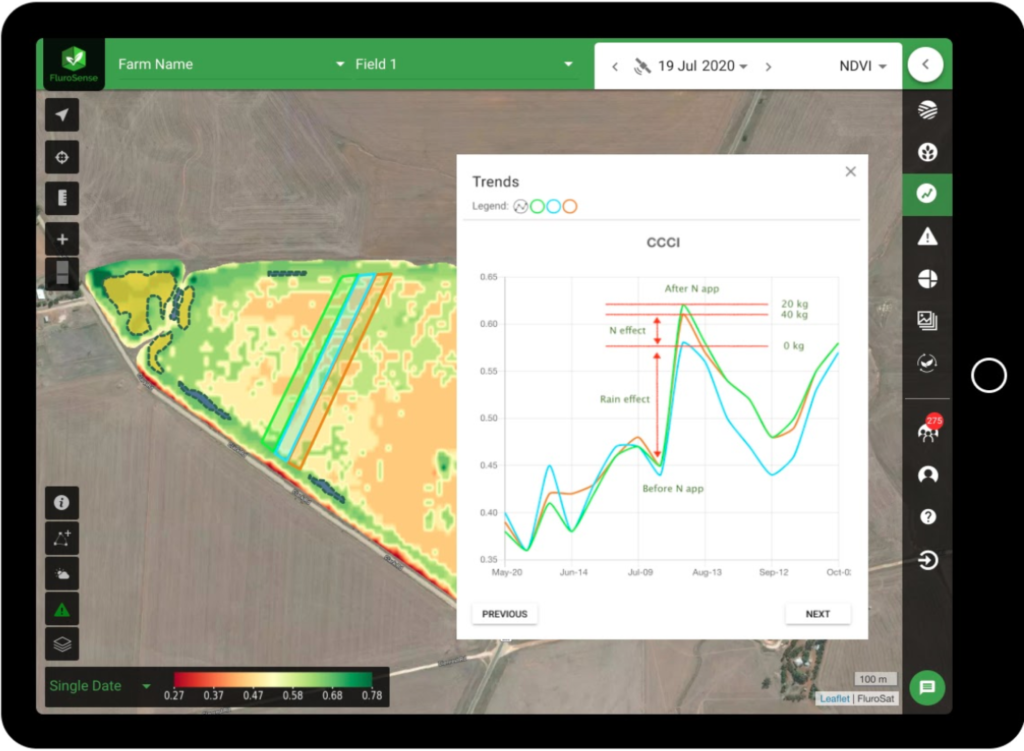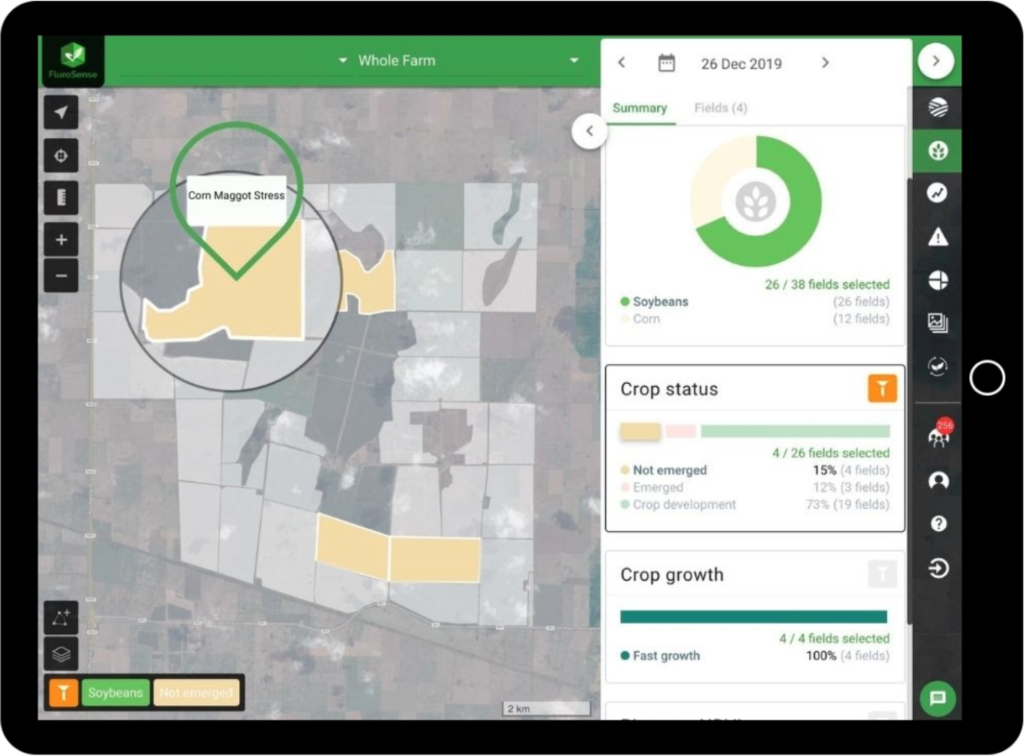Note: In 2021, FluroSat and soil health startup Dagan combined forces to become Regrow. Up-to-date information about the Regrow platform can be found on regrow.ag.
1. Using Crop Stress to identify specific problems
You can use insights to make sense of last season's data. Check out your crop stress detection history on your cornfields to identify any persistent corn rootworm problem areas and make adjustments to your spraying routine for this upcoming year.

2. Don't let weather bring you down
This season in the corn-belt, harvesting was greatly impacted by the derecho storm. Harvesters were able to salvage corn crops by using sampling points to evaluate areas of the field that fared better in the storm and continued to track performance. The same method can be used in 2021 to track damage and salvage crops after bad weather.

3. Assess trial outcomes
You can also take a look back at your N-strips on your wheat fields to make more informed decisions for your 2021 nutrition program! By looking back at this data you will be able to determine which treatment worked best and which did not work as well.

4. Address drainage issues
As the season's end nears, it is time to decide where to address field drainage issues. Make sure that your recommendations are based on data! Look at Crop Stress reports after heavy rains for areas where water ponding caused damage.
Crop Insights is able to detect heavy rainfall patterns and the damage done by those storms. It is important to look at data collected after severe storms in order to determine field areas that should be better prepared to weather the 2021 season.
5. Analyze cover crop performance
You can use the Crop Biomass attribute to compare which cover crop mixes have had the best field cover in past seasons. Use this data to make more informed decisions in your next growingseason.

6. Determine soil sampling zones
Were you capturing variability in your soil sampling grid this season? Look back at your field variability and productivity zones to determine sampling points on your farms and fields.

7. Determine if you need a fall herbicide
Should you consider a fall herbicide program next year? Look back at crop stress alerts on your soybean fields to identify weed pockets in May-early June.
Using Crop Insights, users can look back at crop stress alerts on individual fields in order to identify areas that may need a fall herbicide in 2021. This function allows for data-driven fall herbicide decisions to be made.
8. Look back at emergence issues
For our customers harvesting grain - take a look back at early season Crop Performance Reports to check for emergence issues on your fields. Use Crop Insights to make sense of yield data.

Using these 8 tips, you will be better prepared for the 2021 season using Crop Insights! Get in touch to learn more.



